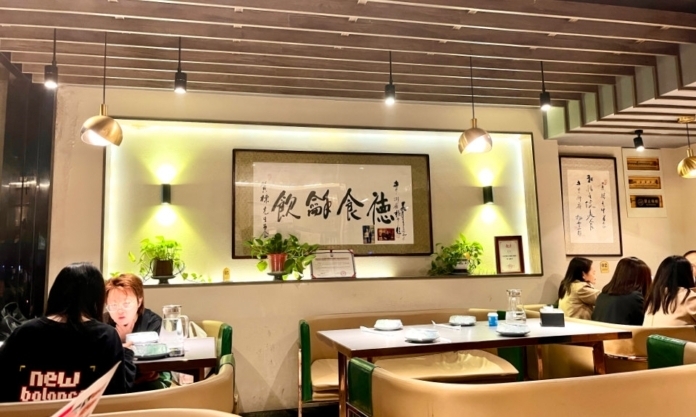You know there is a sort of restaurant in every city. They often look small and unpretentious from the outside, despite their long-standing reputation in the community. They specialise in local favourites; nothing too fancy, but simply tasty and comforting. The prices are affordable, the vibe casual and friendly. Inside, surrounded by glasses clinking, people chatting and perhaps kids crying, you peek into the everyday life of locals and as the night goes on, eventually find yourself becoming part of them. It might get too loud sometimes, but having been through all that we have in the past 2 years, we begin to better appreciate the liveliness and vitality of small businesses which we used to take for granted.
One of these very restaurants in Nanjing is Fulinxuan. Tucked away on a backstreet off Jiqingmen Da Jie, it is surrounded by a few residential compounds which were built well before the rapid rise of the Heixi area. In contrast to the iconic LED lights of Golden Eagle World which is within walking distance, the street where Fulinxuan is located was a bit dark on the rainy autumn night when we arrived.
The breeze was cool and humid. The dim street lights were reflected on the wet pavement. What we needed at that moment was exactly the scene of bustle and warmth inside Fulinxuan, along with the aroma of food.
Luckily, we had a reservation, as all the tables quickly became occupied by 6 pm on that workday. The interior decor looked quite decent, albeit moderately timeworn. With only seven tables (and three banquet rooms upstairs), the limited space was nevertheless packed with energy. The servers hurrying between tables were efficient and loud. A group of young lads sitting next to us sounded particularly excited, with beer bottles everywhere around them. However, the most distinguishable sounds came from the kitchen; from the other side of the restaurant we could clearly hear someone calling out the tickets. It was quite impressive, considering how loud the dining area already was. Then I learned that was the chef and co-owner. He apparently has the bigger voice.
The menu is quite focused by Chinese standards, but enough to cover everything you would need for a meal. I like the fact that every dish on the menu is visualised in photographs, which is particularly helpful if you don’t read Chinese.
Their signature dishes even have names in English, although they seem to be poorly translated by some basic software and can be completely off sometimes.
The restaurant specialises in Nanjing cuisine. Many of the items on the menu would seem familiar to any local resident. I am convinced that everything here should be promising based on the seven dishes we ordered, but if you would like some recommendations to get the ball rolling, here they are.
Liangfen Noodles for Everyone
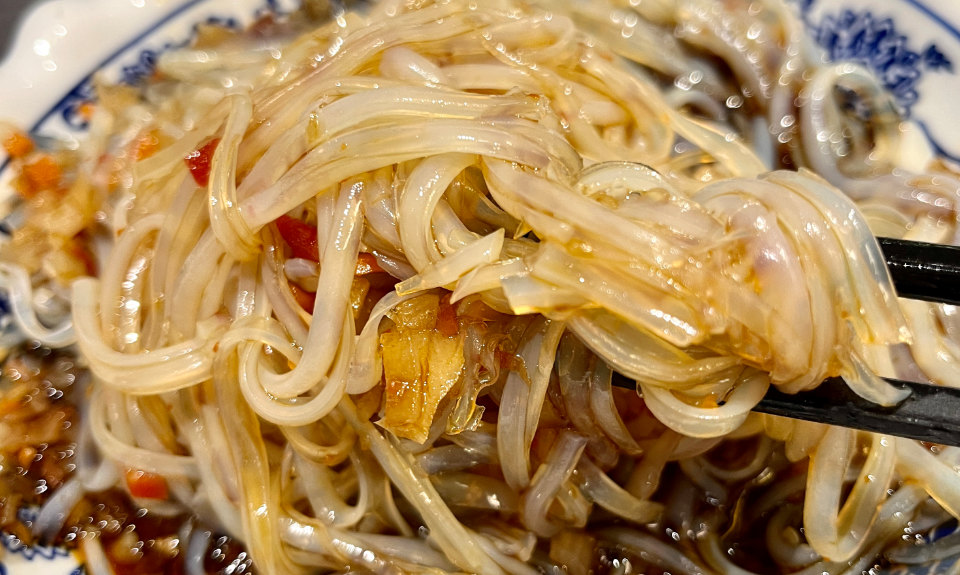
I was excited to see this on the menu, and I would be disappointed if you went there without ordering this. Not just me, but everyone else in the restaurant would be disappointed if you didn’t.
Just take a look around, and you would find this dish on every single table. In fact, as a group of three, we finished two plates of them, and we could finish three had we ordered another.
So, what exactly are “liangfen” (凉粉) noodles? Well, in fact, the word is defined differently in different parts of China. Although it always involves some cold, transparent noodles, as the Chinese term suggests, the making of the noodles and the flavours vary considerably from region to region. In Nanjing, liangfen is a widely loved street food made from pea starch. Over 20 years ago, you could easily find a Liangfen stand anywhere around you. On warmer afternoons, a portable table or two would be set up by the roadside, where passersby would sit down for a quick snack. Using a soap-dish-shaped grater, the liangfen maker would shave off a bowl of transparent noodles from a big chunk of gelled starch, and then season it up with some sweet and sour dressing and finely diced pickles. Chili oil would also be available upon request.
Those stands are now rarely found due to street regulations, so are the liangfen noodles in Nanjing style. That’s perhaps why this humble food is so much appreciated by every local diner at Fulinxuan.
Although the noodles here are served on a plate instead of in a disposable bowl, the texture and flavours are exactly the same as the old days. They are perfect as a starter; refreshing and appetizing, and low in calories so that your stomach won’t be filled before the mains. In fact, they also serve as a palate cleanser, so we ended up having another plate after the mains.
For Meat Lovers
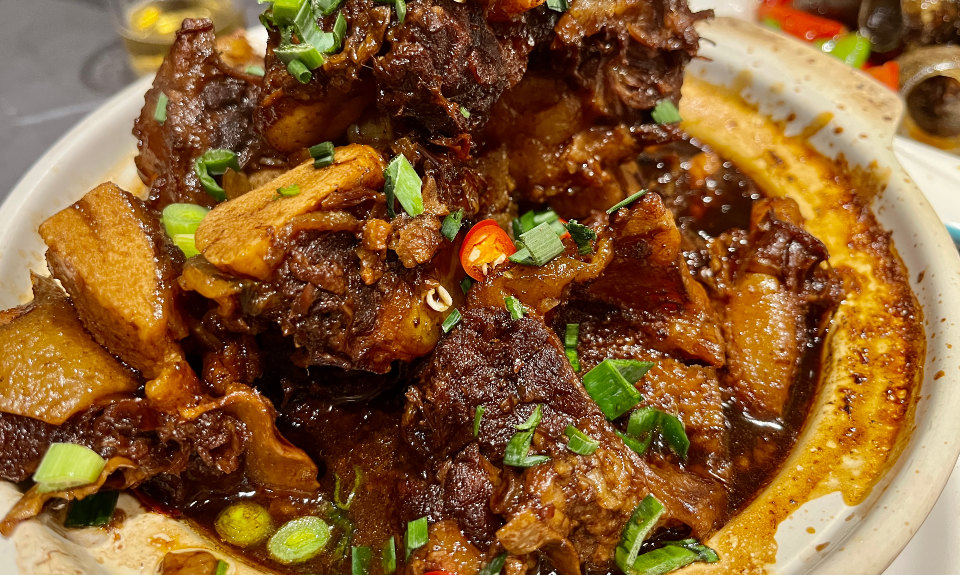
Another dish that every table seemed to have ordered was braised beef. Fulinxuan uses a cut near the ribs which is full of big bones and cartilage, and turns this inexpensive cut into a pot of deliciousness with slow cooking and balanced flavours. The meat is fall-off-the-bone tender and moist, and goes well with the gelatinous cartilage for a complex texture.
“Pork stuffed river snails” is a common dish in the lower Yangtze area, which takes some effort to make. The meat of the snails is firstly removed from the shells.
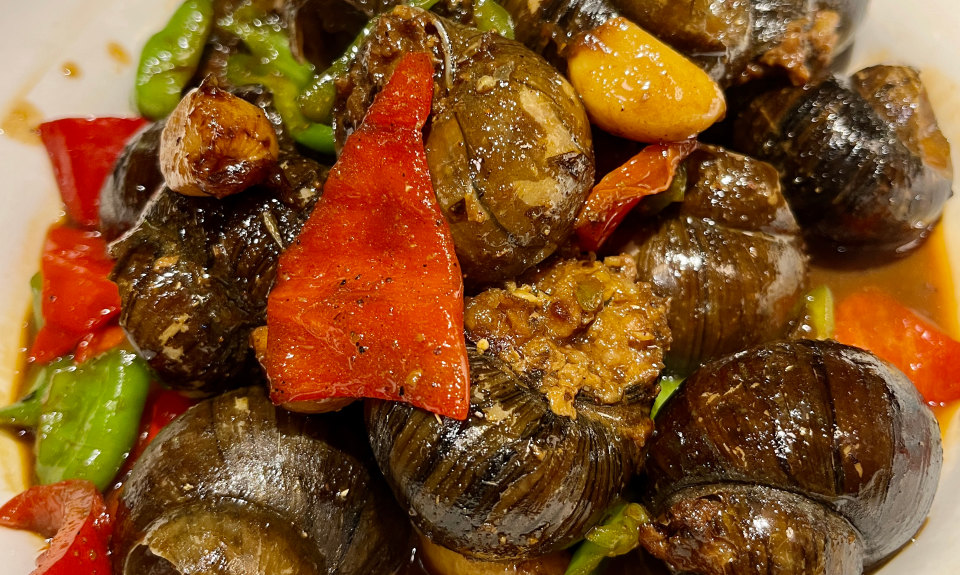
It is then finely chopped, seasoned and mixed with minced pork, and stuffed back into each shell. The stuffed snails are then cooked with spices, soy sauce and Chinese yellow wine. It also takes some effort to eat as you need to pick the meat out from the shells, but all that effort will be rewarded for with the best of both worlds; the earthy, umami taste of the snails and the fatty juiciness of the pork.
For Adventurers
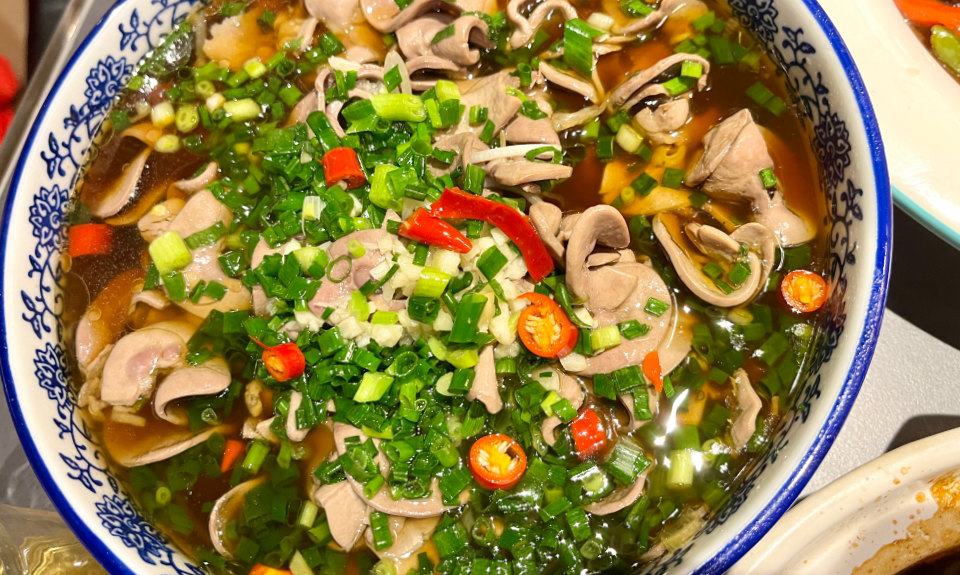
I know you don’t mind eating animal organs if you are reading this. So how about “pork kidneys and bean sprouts” or “stir-fried chicken giblets and mushrooms”? Organ meats are usually the most flavourful dishes in any Chinese restaurant; you know why that is, so I’m sure you won’t be disappointed. If those are not enough, there is another classic Nanjing dish called “Double Stinks,” typically made with stinky doufu and pork intestines. Here in Fulinxuan, the former is replaced with stinky Mandarin fish which you might be keen to try.
For Veggie Lovers
The roasted kabocha squash is a must-have. For at least one moment, this dish made me feel like I could survive the season without pumpkin spice. Cubed with skin on, the squash was roasted on a bed of sweet onions. It was warm, sweet, creamy, nutty and slightly salty. Of course, there was no trace of cinnamon, or nutmeg or ginger, but you would forget about those and be completely satisfied with the original flavour of the winter squash.
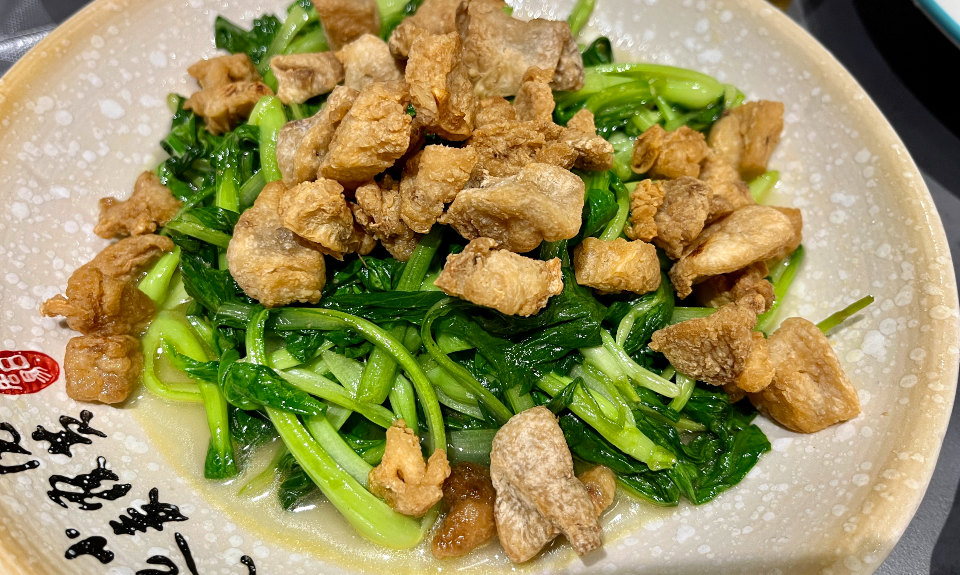
We also ordered “stir-fried baby bok choy with pork scratchings.” It used to be a classic vegetable dish that people made at home as a great use of pork scratchings; a byproduct of rendering lard. It is less often seen these days as most people no longer render lard at home and have become more concerned with fat intake.
The menu also has two dishes featuring luhao (芦蒿) which are now out of season. Luhao is a kind of wormwood which is grown for its edible stalks. It has a refreshing, herbal aroma which is how spring tastes like in Nanjing. I will come back for them next year.
A Plus for Drinkers
Just a few steps away along the street, there is a nice craft-beer bar called Ning. Cozy and smoke-free, Ning offers a good selection of domestic and imported beers with eight taps and more bottles in the fridge. It is a convenient stop for some beer digestif. Alternatively, you can bring some beer from here to Fulinxuan to go with your meal. You won’t be judged either way.
Fulinxuan 富临轩私房菜, 188 Jiqingmen Avenue 集庆门大街 188号; Tel: 52267778. Hours: 11:30-13:30 / 16:30-20:30


